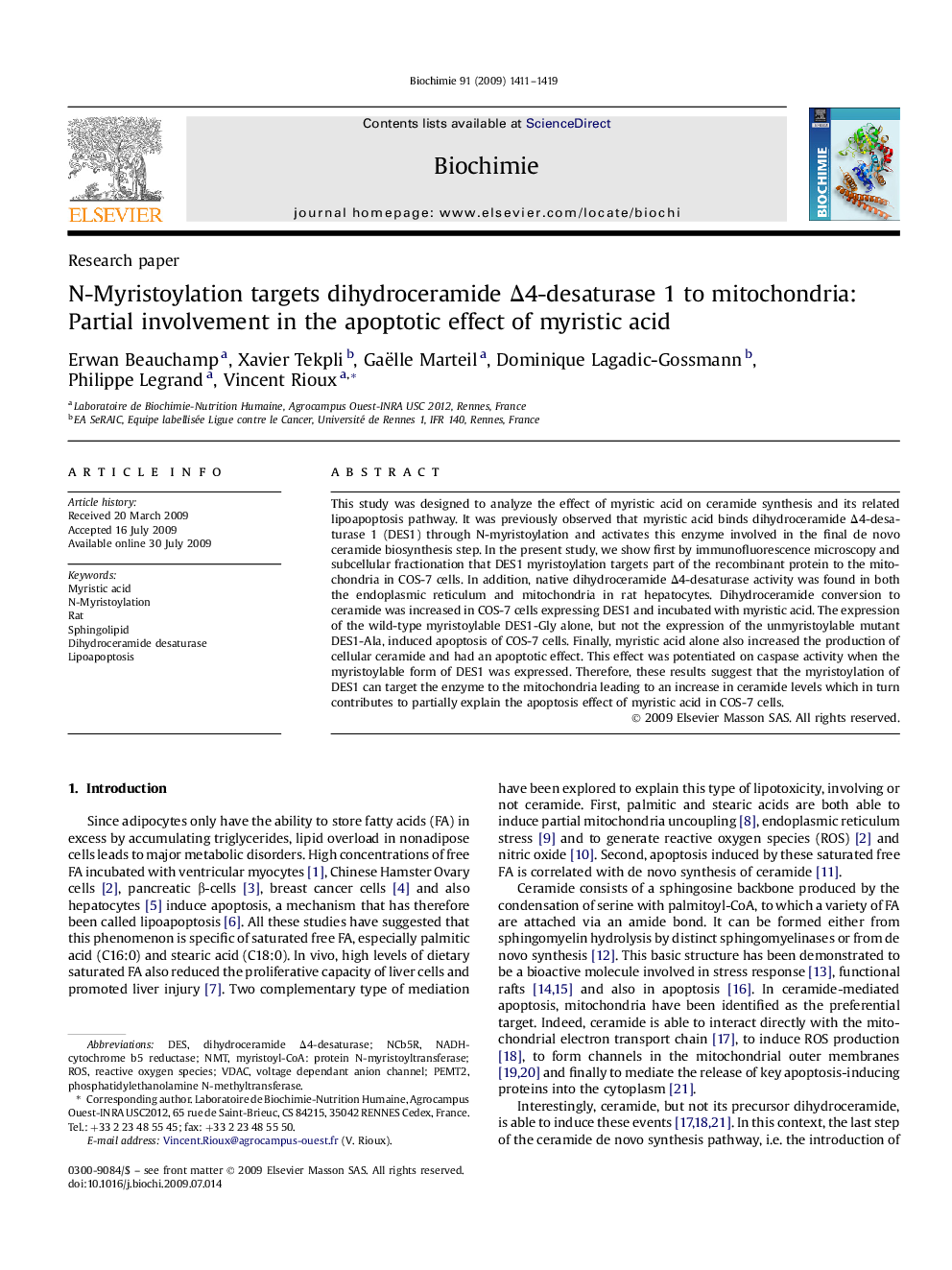| Article ID | Journal | Published Year | Pages | File Type |
|---|---|---|---|---|
| 1952318 | Biochimie | 2009 | 9 Pages |
This study was designed to analyze the effect of myristic acid on ceramide synthesis and its related lipoapoptosis pathway. It was previously observed that myristic acid binds dihydroceramide Δ4-desaturase 1 (DES1) through N-myristoylation and activates this enzyme involved in the final de novo ceramide biosynthesis step. In the present study, we show first by immunofluorescence microscopy and subcellular fractionation that DES1 myristoylation targets part of the recombinant protein to the mitochondria in COS-7 cells. In addition, native dihydroceramide Δ4-desaturase activity was found in both the endoplasmic reticulum and mitochondria in rat hepatocytes. Dihydroceramide conversion to ceramide was increased in COS-7 cells expressing DES1 and incubated with myristic acid. The expression of the wild-type myristoylable DES1-Gly alone, but not the expression of the unmyristoylable mutant DES1-Ala, induced apoptosis of COS-7 cells. Finally, myristic acid alone also increased the production of cellular ceramide and had an apoptotic effect. This effect was potentiated on caspase activity when the myristoylable form of DES1 was expressed. Therefore, these results suggest that the myristoylation of DES1 can target the enzyme to the mitochondria leading to an increase in ceramide levels which in turn contributes to partially explain the apoptosis effect of myristic acid in COS-7 cells.
